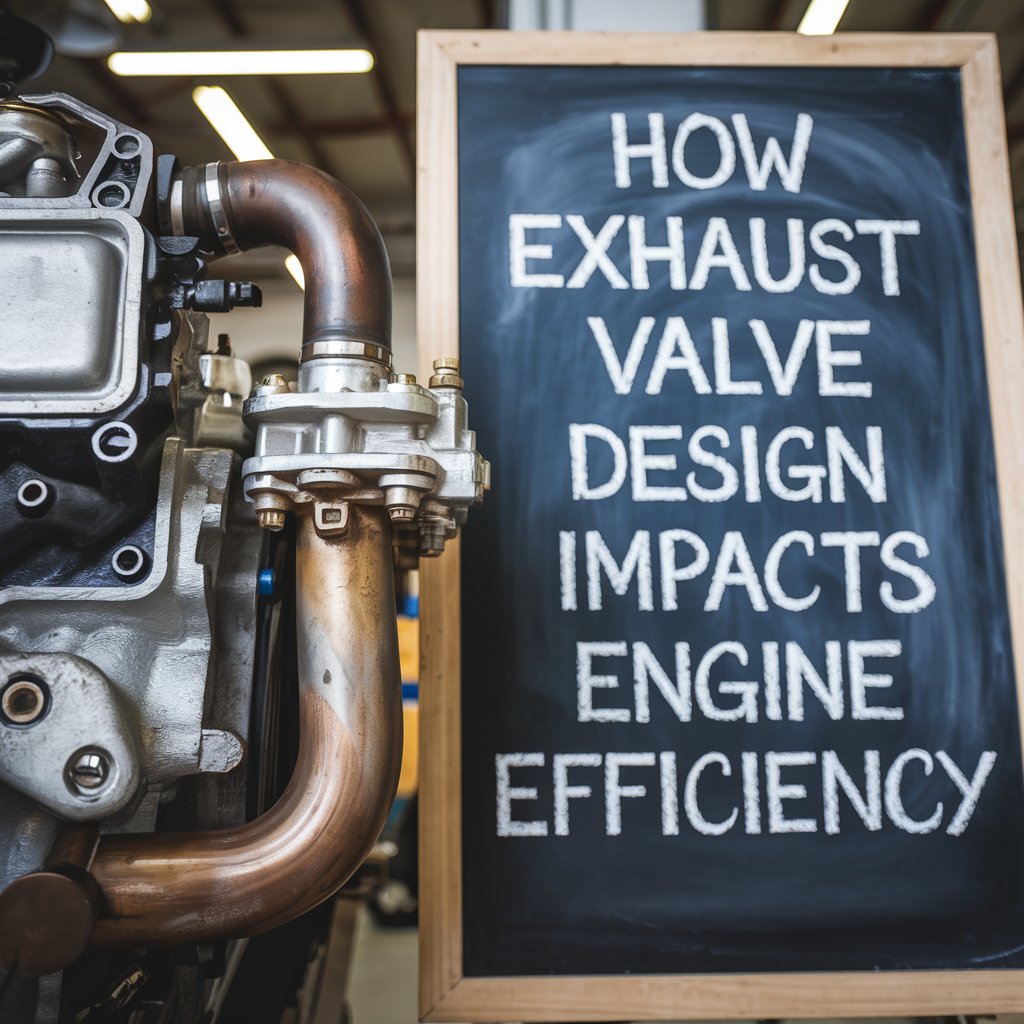When it comes to engine performance and efficiency, many car enthusiasts focus on flashy components like turbochargers or high-flow intake systems. However, one crucial element that often gets overlooked is the humble exhaust valve.
These small but mighty components play a vital role in your engine’s performance, and their design can significantly impact overall efficiency. In this article, we’ll dive into the world of exhaust valve design and explore how it affects your engine’s performance.
The Basics of Exhaust Valves
Before we delve into the intricacies of design, let’s start with the basics. What exactly is an exhaust valve? In simple terms, it’s a mechanical device that controls the release of exhaust gases from the combustion chamber of an internal combustion engine.
Every time your engine completes a combustion cycle, the exhaust valve opens to allow the spent gases to exit, making room for a fresh air-fuel mixture.
The exhaust valve operates in an incredibly harsh environment. It’s subjected to high temperatures, corrosive gases, and constant mechanical stress. This is why the design and material of exhaust valves are so crucial to an engine’s performance and longevity.
Key Factors in Exhaust Valve Design
Several factors come into play when designing an exhaust valve:
- Material Selection
- Valve Head Design
- Stem Design
- Seat Design
- Cooling Features
Each of these elements can significantly impact the valve’s performance and, consequently, the engine’s efficiency.
Material Selection:
One of the most critical aspects of exhaust valve design is material selection. The two most common materials used for exhaust valves are stainless steel and Inconel, a nickel-chromium-based superalloy. This brings us to a common question in the automotive world: inconel exhaust valves vs stainless – which is better?
Stainless steel has been a popular choice for exhaust valves for many years due to its good heat resistance and relatively low cost. However, in high-performance applications or engines that run at very high temperatures, Inconel often becomes the material of choice.
So, why use Inconel exhaust valves? Inconel offers superior heat resistance and strength at high temperatures compared to stainless steel. It maintains its strength and resists corrosion even when subjected to extreme heat, making it ideal for high-performance engines or those that operate under severe conditions.
However, Inconel is significantly more expensive than stainless steel, which is why it’s not used in all applications. The choice between Inconel and stainless steel often comes down to a balance between performance requirements and cost considerations.
Valve Head Design: Shaping Performance
The design of the valve head plays a crucial role in exhaust flow efficiency. The most common designs are:
- Tulip (or mushroom) shape
- Semi-tulip shape
- Flat head
Each design has its pros and cons. The tulip shape, for instance, offers good flow characteristics but may be more prone to thermal stress. Flat head designs, on the other hand, are more resistant to thermal stress but may not flow as efficiently.
The choice of head design often depends on the specific engine application and the balance between flow efficiency and durability required.
Stem Design: The Unsung Hero
While the valve head gets most of the attention, the stem design is equally important. The stem connects the head to the valve train and plays a crucial role in heat dissipation. A well-designed stem can help conduct heat away from the valve head, improving durability and performance.
Some high-performance exhaust valves use hollow stems filled with sodium. As the valve moves up and down, the liquid sodium inside the stem moves, helping to transfer heat from the valve head to the cooler end of the valve stem.
Seat Design: Where the Rubber Meets the Road
The valve seat is where the exhaust valve makes contact with the cylinder head to create a seal. The design of this interface is critical for proper sealing and heat transfer. A well-designed seat will provide a good seal to prevent exhaust gas leakage while also helping to conduct heat away from the valve.
Cooling Features: Beating the Heat
Given the extreme temperatures that exhaust valves are subjected to, cooling features are often incorporated into their design. This can include:
- Sodium-filled stems, as mentioned earlier
- Coatings to reflect heat
- Specially designed seats to improve heat transfer
These features help to extend the life of the valve and maintain performance over time.
How Exhaust Valve Design Impacts Engine Efficiency
Now that we’ve covered the key elements of exhaust valve design, let’s explore how these factors impact engine efficiency.
1. Exhaust Flow Efficiency
The design of the exhaust valve directly affects how efficiently exhaust gases can exit the combustion chamber. A well-designed valve allows for smooth, unrestricted flow, reducing pumping losses and improving engine efficiency.
The shape of the valve head, the lift (how far the valve opens), and the duration (how long it stays open) all play a role in determining flow efficiency. Engineers must carefully balance these factors to optimize exhaust flow for the specific engine application.
2. Heat Management
Efficient heat management is crucial for maintaining engine performance and longevity. Exhaust valves that can effectively dissipate heat help to:
- Prevent pre-ignition and detonation
- Reduce thermal stress on engine components
- Maintain optimal combustion chamber temperatures
By managing heat effectively, well-designed exhaust valves contribute to overall engine efficiency and durability.
3. Sealing Efficiency
Proper sealing of the exhaust valve is critical for maintaining compression and preventing exhaust gas leakage. A valve that seals well helps to:
- Maintain proper compression ratios
- Prevent power loss
- Reduce emissions
Good sealing efficiency is particularly important in modern engines with high compression ratios and stringent emissions standards.
4. Weight and Inertia
The weight of the exhaust valve affects the engine’s ability to rev quickly and reach high RPMs. Lighter valves reduce the inertia of the valvetrain, allowing for higher engine speeds and potentially improving efficiency, especially in high-performance applications.
However, engineers must balance the desire for light weight with the need for durability and heat resistance. This is another area where material selection plays a crucial role.
5. Durability and Longevity
While not directly related to moment-to-moment efficiency, the durability of exhaust valves impacts long-term engine performance. Valves that can withstand the harsh conditions inside the engine for longer periods help maintain efficiency over time and reduce the need for costly repairs or replacements.
Innovations in Exhaust Valve Design
As engine technology continues to advance, so too does exhaust valve design. Some recent innovations include:
- Advanced coatings to improve heat resistance and reduce friction
- Computer-optimized valve shapes for improved flow characteristics
- Use of new, exotic materials for even better heat resistance and durability
- Integration with variable valve timing systems for improved efficiency across a wide range of engine speeds
These innovations continue to push the boundaries of what’s possible in terms of engine efficiency and performance.
Conclusion
While they may not be the most glamorous part of an engine, exhaust valves play a crucial role in determining overall efficiency and performance. From material selection to intricate design features, every aspect of an exhaust valve is carefully engineered to withstand extreme conditions while optimizing engine operation.
Whether you’re a car enthusiast looking to squeeze every ounce of performance out of your engine, or simply someone who wants to understand how your vehicle works, appreciating the complexity and importance of exhaust valve design can give you a new perspective on engine efficiency.
The next time you hear your engine purr (or roar), spare a thought for those hard-working exhaust valves. They’re doing much more than just letting out hot air – they’re a key part of the intricate dance that turns fuel into motion, and their design is a testament to the ingenuity of automotive engineering.






